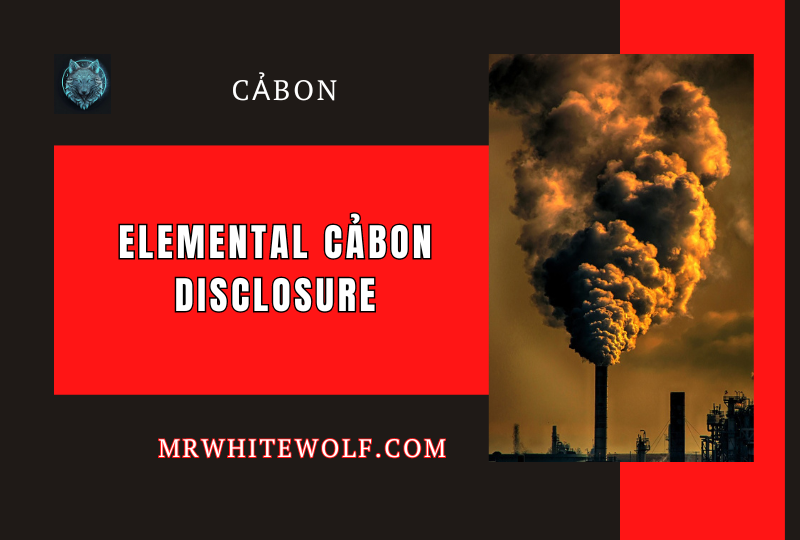FOR SALE
+92-300-1900991
FOR SALE
+92-300-1900991


cảbon, a fundamental element abundant in nature, is of great importance in various fields of science and technology. From its role as a building block of life to its universal application in industries such as energy, materials, and electronics, coal has revolutionized the way we understand and interact with the world. In this article, we’ll dive into the fascinating world of carbon by exploring its properties, its uses, and the profound impact it has on our daily lives.
cảbon, marked with the symbol “C” in the periodic table, is an important element with atomic number 6. It is a nonmetal that comes in various forms, including diamond, graphite, fullerenes, and carbon nanotubes. cảbon ability to form strong covalent bonds and its excellent chemical diversity make it the basis of many organic compounds that undermine life as we know it.
cảbon plays a crucial role in the chemistry of life, which forms the basis for organic molecules such as proteins, carbohydrates, lipids, and nucleic acids. It forms a structural framework of biomolecules and enables complex processes of metabolism, growth and reproduction. The ability of cảbon with other elements and long chains in itself enables the complexity and diversity of biological systems.
Carbon comes in many forms, from diamonds and graphite to futuristic graphene. Each shape has unique characteristics that make it suitable for a wide range of applications.
Diamond
Diamond, the hardest natural material, is made up of cubic atoms arranged in a rigid tetrahedral lattice structure. Abrasives, jewelry, and cutting tools all use diamonds.
Graphite
Graphite has a hexagonal lattice structure in which cubic atoms are arranged in layers. The weak bonds between the wafers make the graphite soft, dark, and flaky. It is used in pencils, lubricants, and nuclear reactors.
Graphene
Graphene, a single layer of graphite, is a two-dimensional layer of Cuban atoms connected to each other in a hexagonal lattice. Graphene is flexible, almost transparent, and ideal as a conductor of electricity and heat. Potential applications include lightweight electronics, flexible displays, high-efficiency solar cells, and ultra-fast transistors.
Read More: What is Minestwrs?
Method
Cảbon molecules, which consist of hexagonal and pentagonal rings that form spherical or tubular structures. The most well-known fullerene is Buckminster fullerene C60 in the shape of a soccer ball. Drugs can be used in medicine, catalysis, and nanotechnology.
Carbon nanotubes
Cảbon nanotubes are cylindrical fullerenes made up of graphene layers wrapped in tubes. They are lightweight but stronger than steel and are great conductors of electricity. Potential applications for Cảbon nanotubes include high-performance composites, energy storage, and molecular electronics.
In this way, cảbon is a universal element that forms a wide range of structures with properties suitable for many applications that can improve and enrich our lives in the future. Ongoing research into Cảbon materials has the potential to lead to exciting new discoveries and innovations.

Cảbon has many unique properties that make it possible to produce universal chemical compounds. It has four valence electrons in its outer shell, which allow it to form diverse and stable covalent bonds with many other elements. This property gives cảbon the ability to form long chains and ring structures.
Cảbon atoms can be linked together to form single, double, and triple covalent cảbon-cảbon bonds. Cuba’s ability to form double and triple bonds allows the formation of alkenes and alkynes. In addition, cảbon can form covalent bonds with other cảbon atoms, as well as hydrogen, oxygen, nitrogen, phosphorus, sulfur, and halogen atoms. These universal binding properties allow cảbon to form a wide range of very large and complex molecules.
In the nature of Cảbon, there are two stable isotopes: cảbon-12 and cảbon-13. Cảbon-12 makes up 98.89% of natural cảbon, while cảbon-13 accounts for 1.11%. The radioactive isotope carbon-14 has a half-life of roughly 5,700 years. It is frequently employed in radiocarbon dating to ascertain an object’s age.
In the nucleus of a Cuban atom, there are 6 protons and 6 neutrons. Electron modulation: 1s2, 2s2, 2p2. In the ground state, cảbon has two electrons in the 1s orbital, two electrons in the 2s orbital, and two electrons in the 2p orbital. When cảbon forms covalent bonds, it pushes a 2s electron into an empty 2P orbital. As a result, carbon can share its four unpaired valence electrons with other atoms in its outer shell.
The Cuban is essential for all known life on Earth. Complex organic molecules consist mainly of cement, often combined with hydrogen, oxygen, and nitrogen. Cảbon’s ability to form diverse and stable covalent bonds enables the formation of millions of different organic compounds that are an integral part of biochemical processes.
Read More: What is Masqlasen?
The versatility of carbon goes beyond biology and branches out into different areas of materials science and technology. Here are some notable examples:
Carbon fiber
Carbon fiber composites are lightweight but extremely strong and durable materials that are widely used in the aerospace, automotive, and sports industries. The excellent strength-to-weight ratio makes them ideal for applications that require strength and rigidity, such as aircraft parts and high-end sports equipment.
Graphene
Graphene, which consists of a single layer of carbon atoms arranged in a two-dimensional lattice, has remarkable electrical and thermal conductivity, as well as excellent mechanical properties. It has the potential for revolutionary advances in electronics, energy storage, and sensing, paving the way for innovations such as flexible displays, high-speed transistors, and efficient energy storage.
Carbon nanotubes
Carbon nanotubes take the form of cylindrical structures formed from coiled graphene layers. They have excellent strength, thermal conductivity, and electrical properties. Carbon nanotubes have applications in fields such as nanoelectronics, nanomedicine, and material amplification, opening up opportunities for ultra-compact electronic devices, targeted drug delivery systems, and the production of stronger composites.
Coal-based energy sources such as coal, oil, and gas have played a crucial role in the development of modern society. However, burning these fossil fuels releases carbon dioxide (cảbon), which contributes to climate change. The increasing focus on renewable energy has led to advances in carbon capture and storage technologies aimed at reducing cảbon emissions and reducing their negative impact on the environment.
In addition, carbon-based materials occupy a key place in renewable energy technologies. Carbon electrodes are used, for example, in fuel cells, while carbon-based materials serve as important components in photovoltaic cells and energy storage devices such as lithium-ion batteries. These materials enable the transition to a cleaner and more sustainable energy future.
Carbon dioxide (CO2) is a greenhouse gas that plays an important role in climate change and global warming. CO2 is naturally produced in the atmosphere, but human activities, such as burning fossil fuels, have led to a dramatic increase in CO2 levels. This increase in CO2 leads to a greenhouse effect that traps heat in the lower atmosphere and increases the average temperature of the Earth’s surface.
As CO2 levels rise, the climate continues to change, and the planet warms over time. This warming is causing sea levels to rise, leading to coastal flooding, melting glaciers, and changing weather patterns, leading to more frequent or intense extreme weather events such as hurricanes, heat waves, droughts, and wildfires. All these effects endanger human society and the environment.
Reducing CO2 emissions is crucial to mitigating the worst effects of climate change. Switching from fossil fuels to renewable energy, improving energy efficiency, and changing agricultural and land-use practices are some of the steps that can be taken. Capture and storage is a new technology that can remove CO2 from the atmosphere and oceans to restore the balance of the climate system. International agreements, such as the Paris Agreement, aim to limit global warming by reducing greenhouse gas emissions on a global scale.
By understanding the role of carbon dioxide and other greenhouse gases in the climate system, individuals and governments can take action to curb emissions and make a positive impact on the future of our planet. While the challenges ahead are enormous, collective and sustained efforts to reduce CO2 pollution today can help ensure a more stable climate and environment for future generations.
From the molecular machinery of life to the materials that power our society, carbon has a profound impact on almost every aspect of our existence. Its amazing chemical capabilities and many allotropes make carbon indispensable for current technologies and fundamental for future innovations. While the sustainable use of natural resources remains paramount, carbon will undoubtedly continue to play a central role as we enter the era of materials science, nanotechnology, and sustainability. Our culture owes a lot to this multifaceted element. When we think of coal, we must be aware that we are thinking of one of nature’s greatest gifts.
What makes coal so special?
Carbon is characterized by its ability to form four strong covalent bonds that allow it to bond with itself and other elements in a myriad of stable configurations. This multi-layered relationship is at the core of the diversity and complexity of organic chemistry.
What is a carbon footprint?
The carbon footprint is the total amount of greenhouse gas emissions caused, directly or indirectly, by a person, organization, event, or product. It is measured in the unit CO2-eq, a widely used unit of measurement used to compare the climate impacts of different greenhouse gases.
How can we reduce CO2 emissions?
Strategies to reduce carbon emissions include improving energy efficiency, switching to renewable energy, electrifying transport, improving carbon storage in forests and soils, and developing carbon capture technologies.
Why is carbon fiber so strong?
The high strength of carbon fibers is due to the molecular alignment of the carbon atoms along the fiber axis. This alignment, combined with strong carbon-carbon bonds, provides excellent tensile strength.
Why is graphene important, and what does it mean?
A single sheet of carbon atoms joined in a hexagonal arrangement is called graphene. Graphene’s remarkable electrical, optical, mechanical, and thermal capabilities have the potential to transform a wide range of applications, including electronics and medicine.